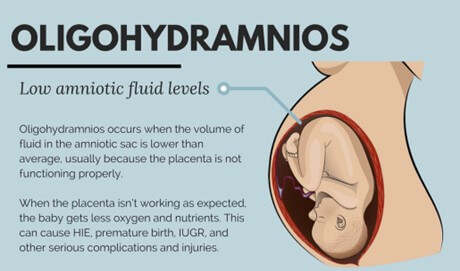A patient’s umbilical cord prolapses during labor.
The nurse should place her in which position? (Select all that apply.).
Knee-chest
Trendelenburg
Supine with a rolled towel under one hip
Lithotomy
Sims
Correct Answer : A,B
The correct answer is choice A and B. The nurse should place the patient in knee-chest or Trendelenburg position to relieve the pressure of the fetal presenting part on the prolapsed cord and improve fetal oxygenation. These positions also allow gravity to help keep the cord in the uterus and prevent further descent.
Choice C is wrong because supine position can worsen cord compression and compromise fetal blood flow. Choice D is wrong because lithotomy position can also increase cord descent and reduce fetal perfusion. Choice E is wrong because Sims position can cause cord prolapse if the membranes are intact or rupture spontaneously.
Normal ranges for fetal heart rate are 110 to 160 beats per minute. Cord prolapse can cause fetal bradycardia with decelerations during contractions due to cord compression.
This is a sign of fetal distress and requires immediate intervention.
Nursing Test Bank
Naxlex Comprehensive Predictor Exams
Related Questions
Correct Answer is C
Explanation
The correct answer is choice C. A client who has oligohydramnios.
Oligohydramnios is a condition where there is too little amniotic fluid around the fetus.This can cause the umbilical cord to slip down into the cervix or vagina before the baby, resulting in cord prolapse.
Cord prolapse can cut off the blood and oxygen supply to the baby and cause fetal distress or death.
Choice A is wrong because a client who is pregnant with twins is not at greater risk for cord prolapse unless there is also malpresentation of the fetuses, such as breech or transverse lie.
Choice B is wrong because a client who has gestational hypertension is not at greater risk for cord prolapse unless there is also polyhydramnios, which is excessive amniotic fluid around the fetus.
Choice D is wrong because a client who has placenta previa is not at greater risk for cord prolapse unless there is also artificial rupture of membranes by doctors.

Correct Answer is D
Explanation
The correct answer is choice D. A patient who is 34 weeks pregnant with a breech presentation and ruptured membranes.This is because breech presentation and ruptured membranes are both risk factors for umbilical cord prolapse, which is where the umbilical cord descends through the cervix and is alongside or below the presenting part of the fetus.This can cause fetal hypoxia and distress.
Choice A is wrong because a cephalic presentation and intact membranes are not risk factors for umbilical cord prolapse.
Choice B is wrong because although twins and ruptured membranes are risk factors for umbilical cord prolapse, the risk is lower than in choice D. Choice C is wrong because although a transverse lie is a risk factor for umbilical cord prolapse, the risk is lower than in choice D if the membranes are intact.
Whether you are a student looking to ace your exams or a practicing nurse seeking to enhance your expertise , our nursing education contents will empower you with the confidence and competence to make a difference in the lives of patients and become a respected leader in the healthcare field.
Visit Naxlex, invest in your future and unlock endless possibilities with our unparalleled nursing education contents today
Report Wrong Answer on the Current Question
Do you disagree with the answer? If yes, what is your expected answer? Explain.
Kindly be descriptive with the issue you are facing.
